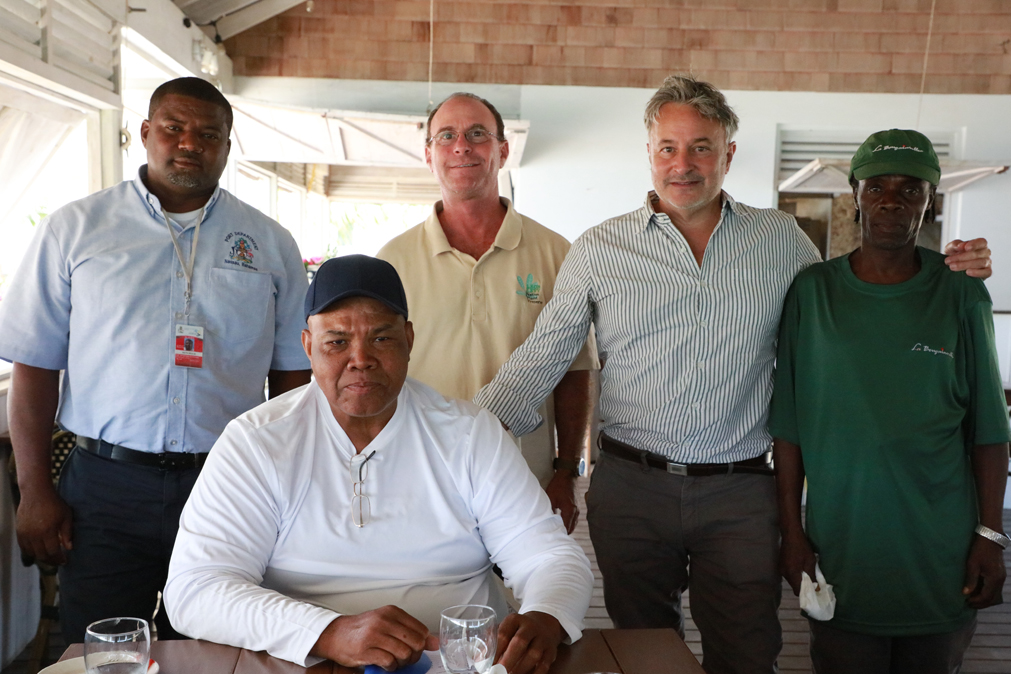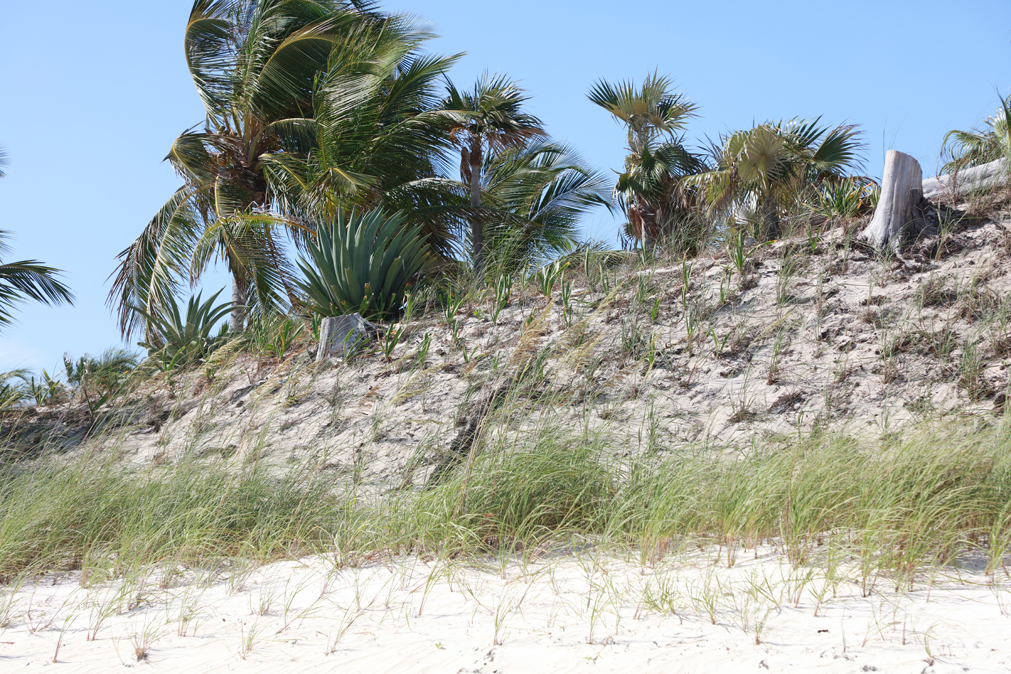
(Sea oats grasses used to replace invasive species and enhance Dune Protection)
About three years ago, hotelier Tom Marrazza at the La Bougainvillea Resort, along the Atlantic coast near the end of the Banks Road near Palmetto Point embarked on a project with his head gardener, Coby, and other assistants to propagate and plant sea oats grasses (Uniola paniculata), along the dunes flanking his beachfront resort property, in lieu of the invasive casuarina and scaevola plants that dominated the area.
Tom, consulted local experts, like Mr. Lionel Fernander with the Department of Environmental Planning and Protection, as well as Dr. Ethan Freid, Botanist with the Leon Levy Native Plant Preserve, as he advanced the initiative to naturally protect the dunes and coastline along the resort property.
“I knew that the casuarinas were invasive and we had discussed taking them out of the entire property, and the Leon Levy Native Plant Preserve actually helped me take some out originally, and we also knew that the scaevola were invasive, and took those out further along the beach as well. We went over it with Ethan Freid, Botanist with the Levy Preserve, on what we should leave in and what we should take out, and just started working on it over time. I wasn’t sure at first if we were going to do the whole beachfront or not, but it just started with Coby, and it never stopped really. It was just a little at a time… I feel that it is well worth it.
“We nurtured cuttings, then once the roots started to shoot, we put them in little pots, and once they caught in the little pots we were able to plug it into the dunes, and keep it propagating and propagating,” shared Marrazza. After planting in the sand, he explained, the sea oats grasses took about two years to reach full size.
While showcasing some of the work done on a walking tour with Ethan, Coby and The Eleutheran, during April 2022, Tom shared, “We had a storm not long ago, that took out a chunk of beach, and then it came back again, as he pointed to a robust set of sea oats plantings with sand collecting around them, the beginnings of a small sand dune along the Atlantic beach… Coby has worked on this with several other gardeners for about three years.”
About the propagation and planting, Dr. Freid commented, “It’s not one of those plants where you put them in the ground and then walk away. You have to take care of them. But if you time your plantings right and timing them as you are coming into the wet season like we are now, alot of it nature will take care of it, and you will just have to do a little bit of oversight on it to make sure that when we do go through a little dry spell like we sometimes have in June/July. Other than that, you can get it in, and it will get itself going.”
Referring to the fledging dune, he added, “This will continue to build up, and also start building out and will widen the beach, not narrow it, and then it becomes the added protection from the next storm… The comparison that I bring up that people do along coastlines when you get erosion is to put in sea walls, and sea walls fail. It will fail. There has never been a seawall put in that did not eventually fail, because coastlines are dynamic – they shift, they change. The sand moves in and it moves out. You get storms, and they undercut things. A wall is a static thing – and can never change, it can only be that wall. However a dune, it can grow out – it can grow up, and that is your biggest defense. And as we look at climate change and increasing sea level rise – these dunes and these coastal systems are the front line. A homeowner can spend a lot of money on a sea wall, and will very likely have to redo it again. Just look at Winding Bay, people there put in a lot of sea walls, and there were a lot of failures. People are spending hundreds of thousands of dollars to do it over again.”
He continued, while looking at other plants that had sprung up around the sea oats, saying, “So, what you also see over time are other species coming into the coastal area on their own adding to the diversity around the planted out sea oats, like sea purslane, agave and others. If you have casuarina, you end up losing your diversity – but by doing what they did here (planting and propagating sea oats along the dune) they are increasing the diversity naturally. It’s a system that’s building on itself rather than degrading.”
Dr. Freid encouraged homeowners and developers to reach out to them at the Leon Levy Native Plant Preserve if they needed any advice on the way to do projects like the one taken on by La Bougainvillea.

